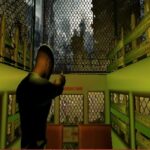15 Wacky but True Real Estate Facts That Will Blow Your Mind
Real estate is a field full of numbers, negotiations, and location-based decisions. Yet, behind the paperwork and property values lie some astonishing, bizarre, and downright fascinating facts that defy conventional wisdom. Below, we reveal 15 of the wackiest but entirely true real estate facts that span the globe and historical eras. Whether you’re an agent, investor, or curious reader, these tidbits will leave you speechless—and maybe a little more informed.
1. Tokyo Homes Have a Lifespan of Just 30 Years
In Tokyo, it’s common practice for homes to be demolished approximately 30 years after they’re built. Unlike in Western countries where historic homes are treasured, Japanese property buyers place little value on older homes. As a result, most opt to tear them down and rebuild from scratch. This phenomenon stems from a cultural preference for modern architecture and strict building codes that frequently evolve after earthquakes.
2. The World’s Largest Treehouse Was 100 Feet Tall
Horace Burgess, a minister from Tennessee, built the largest treehouse in the world in Crossville. Constructed using recycled wood and materials, the massive structure stood over 100 feet tall and spanned 10,000 square feet, with 80 rooms. It took over 15 years to complete, yet in a twist of cruel irony, it burned to the ground in under 15 minutes in 2019. It was never officially open to the public but attracted thousands of intrigued visitors annually.
3. Eiffel Tower Has a Secret Apartment at the Top
Gustave Eiffel, the designer of the iconic Eiffel Tower, included a private apartment for himself at the very top of the structure. Tucked away from public view, this small but elegant space featured a bedroom, kitchen, bathroom, and salon. Today, it’s open to tourists, and visitors can see wax figures of Eiffel entertaining Thomas Edison. The space offers one of the most exclusive views of Paris.
4. Doorknobs Can Kill Germs Naturally
In many older buildings, you’ll find brass or copper doorknobs—not just for aesthetics. These metals possess antimicrobial properties, which means they naturally kill bacteria and viruses. Scientific studies have shown that bacteria survive only a few hours on copper, while they can live for days on stainless steel or plastic. This fact makes brass a health-conscious choice that predates modern hygiene standards.
5. A Red Paperclip Was Traded Up to a House
In one of the internet’s most inspiring bartering stories, Kyle MacDonald managed to trade a single red paperclip all the way up to a two-story house. Through 14 trades involving items like a fish pen, a generator, and a role in a movie, MacDonald eventually secured a home in Kipling, Saskatchewan. The story proves that perseverance and creativity can quite literally turn nothing into something substantial.
6. Scotland Has a Law Allowing Anyone to Camp on Private Land
Known as “right to roam,” this Scottish law permits anyone to hike, bike, or camp on private land, so long as they do not cause damage or disturbance. While this freedom doesn’t extend to gardens or farmland, it’s still a surprising divergence from property norms in much of the world. Scotland’s unique stance reflects a deep-rooted cultural respect for land access.
7. The White House Valuation Is Over $400 Million
If the White House were ever put on the open market, estimates say it would fetch over $400 million—and that’s not counting the historic value or political significance. Sitting on 18 acres in Washington, D.C., the property includes 132 rooms, 35 bathrooms, and a tennis court. Its price is a blend of prime location, historic relevance, and unparalleled architecture.
8. A House Built Entirely Upside Down Exists in Poland
In Szymbark, Poland, tourists flock to a home that’s been constructed completely upside down, both outside and inside. The house is perched on its roof, and walking through it induces a dizzying disorientation. Designed as an art installation reflecting communist-era turmoil, this architectural oddity doubles as a tourist attraction and symbol of societal upheaval.
9. Haunted Houses Must Be Disclosed in Some States
In places like New York and New Jersey, sellers are legally required to disclose if a house is “stigmatized,” including being haunted. Courts have ruled that failing to mention ghostly activity could constitute fraudulent misrepresentation. Known as the “Ghostbuster ruling,” it stems from a 1991 case involving a home in Nyack, NY, where paranormal claims had been previously publicized.
10. There’s a Town Where Homes Cost Less Than $1
The Italian town of Sambuca has offered homes for sale at €1 (about $1 USD) to revitalize declining rural communities. The catch? Buyers must agree to renovate the property within a certain timeframe, typically three years. These promotions have gained traction across Europe, turning forgotten towns into mini tourism hubs.
11. A Skyscraper in New York Has No Windows
The 33 Thomas Street building in Manhattan is a windowless, 550-foot skyscraper originally designed to house AT&T’s telecommunications equipment. Known as the “Long Lines Building,” it’s built to withstand nuclear fallout and remain operational for two weeks off-grid. Conspiracy theorists believe it’s used for surveillance purposes, adding to its mysterious allure.
12. In Switzerland, You Must Get Permission to Flush After 10 PM
In some Swiss apartment buildings, tenants are forbidden to flush toilets after 10 PM, due to strict noise pollution laws. This regulation aims to preserve quiet nights in densely populated residential zones. Though not universal across Switzerland, the rule is a quirk that can surprise foreigners relocating to the country.
13. Dubai Once Cemented Its Status With an Artificial Archipelago
Dubai’s Palm Jumeirah is a man-made archipelago built in the shape of a palm tree and visible from space. Constructed using millions of cubic meters of sand and rock, the project hosts luxury resorts, homes, and beaches. It’s a testament to architectural ambition and real estate excess, redefining what’s possible in land development.
14. The Most Expensive Property Ever Sold Was Over $2 Billion
The most expensive real estate transaction in history occurred in Hong Kong, where a 2-tower office complex was sold for over $5 billion USD. The buyer, a local developer, saw long-term value in the city’s strategic business location. This underscores Hong Kong’s hyper-competitive property market, where location and prestige drive unprecedented price tags.
15. Some Skyscrapers Are Designed with Holes for Dragons
In Hong Kong, several buildings feature intentional “holes” in their design to allow dragons to pass through from the mountains to the sea. Rooted in Feng Shui beliefs, this practice reflects how spiritual and cultural considerations still shape modern architectural choices in Asia. Developers consult Feng Shui masters to ensure prosperity and harmony in their structures.
Conclusion: Real Estate Is Stranger Than Fiction
These 15 facts show that real estate isn’t just about square footage and price per unit. It’s a tapestry woven with cultural oddities, historical quirks, scientific truths, and sometimes even supernatural stories. As we build, buy, and sell, we also inherit the strange and rich stories embedded in these spaces—proving that property is as much about people and perspectives as it is about profit.
For more captivating insights into global real estate trends and curiosities, keep exploring. The world of property is far more eccentric than it appears.





















